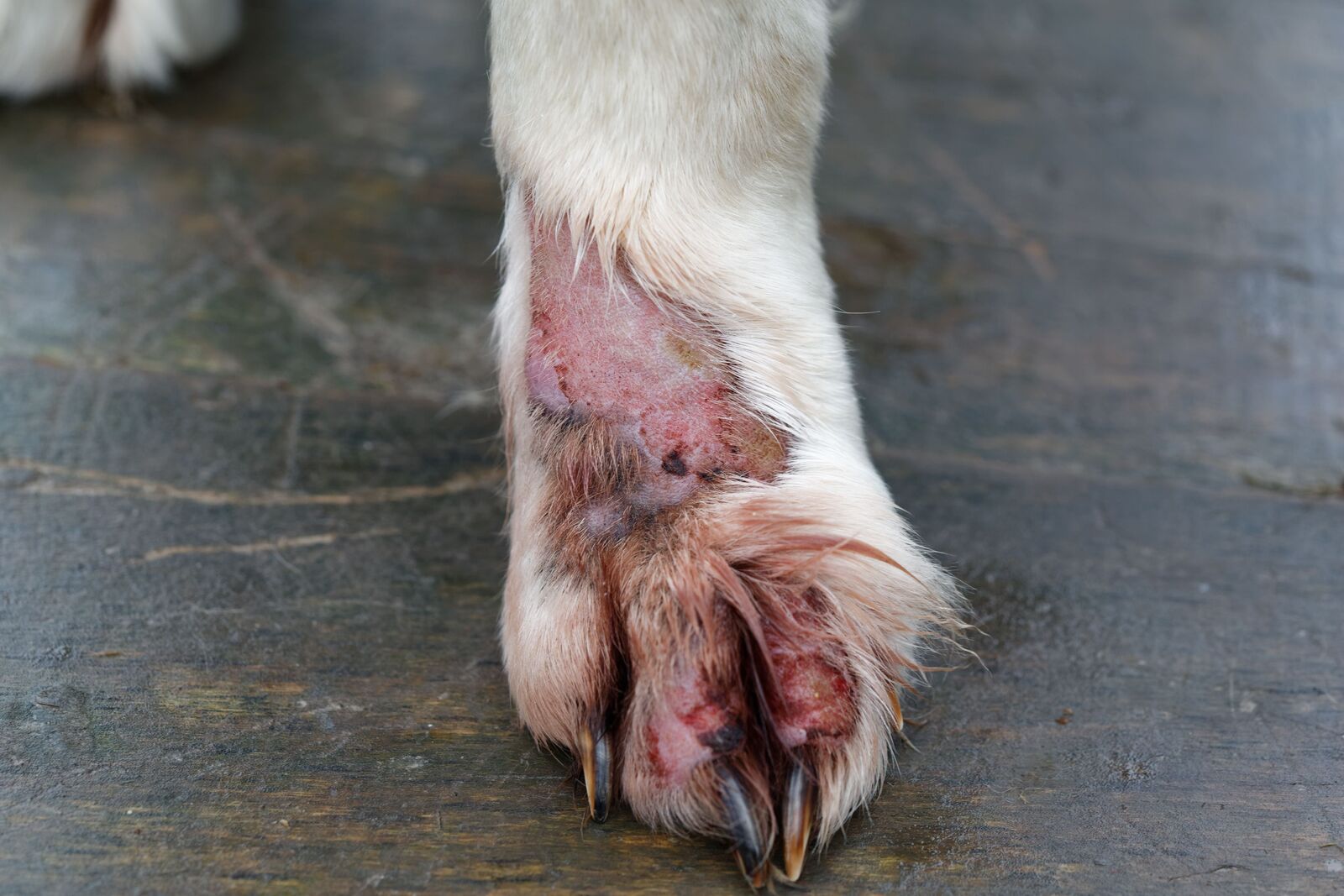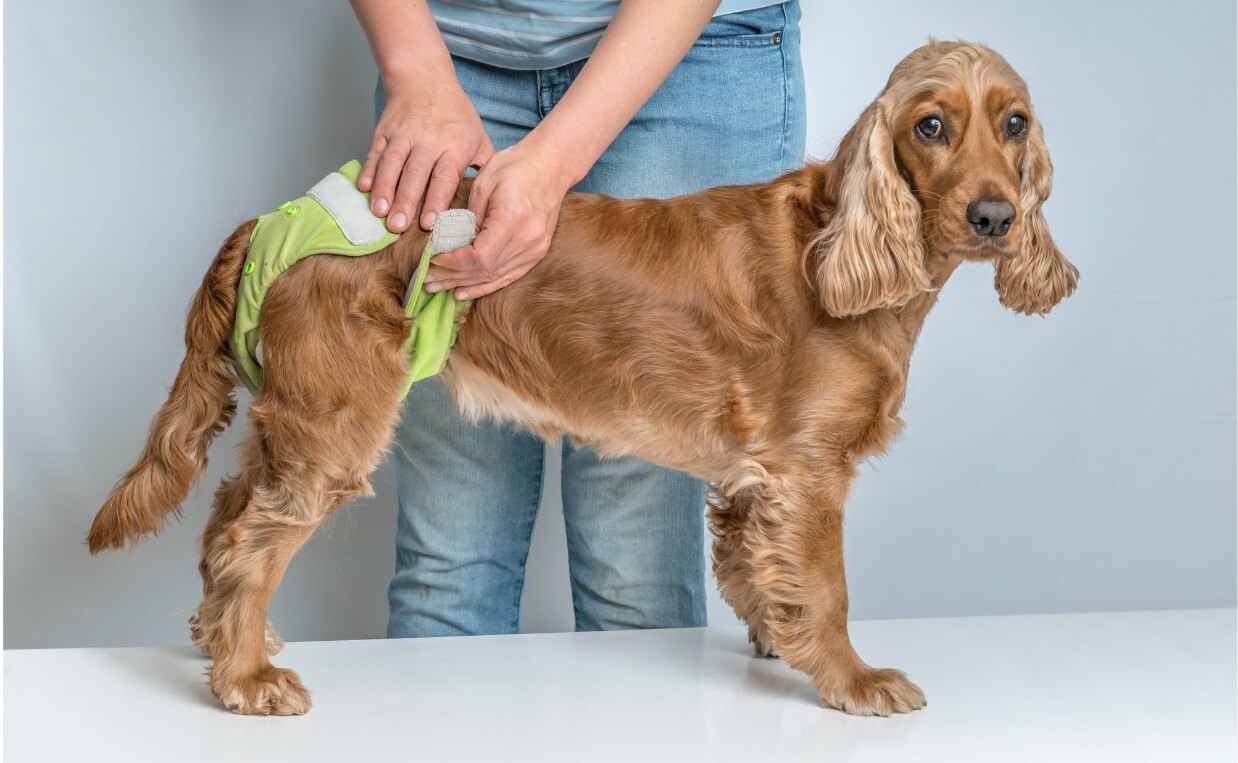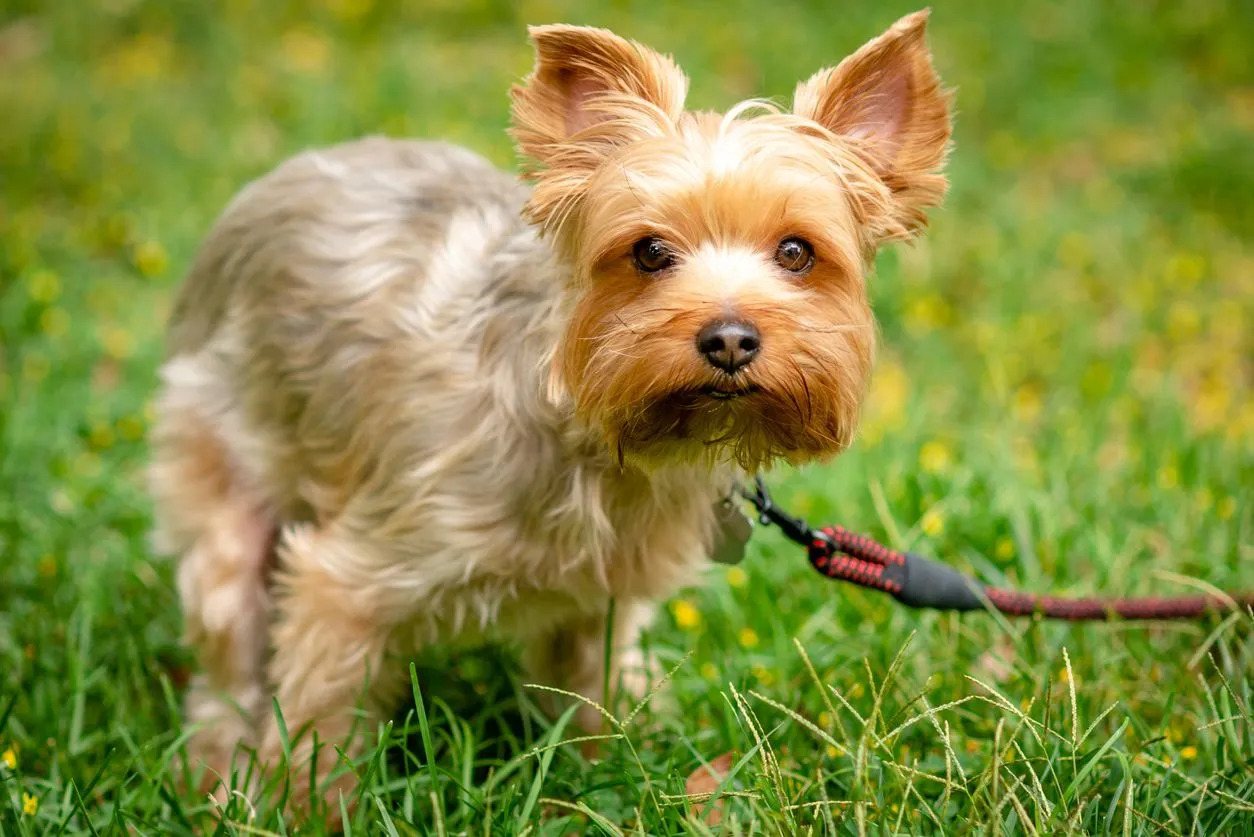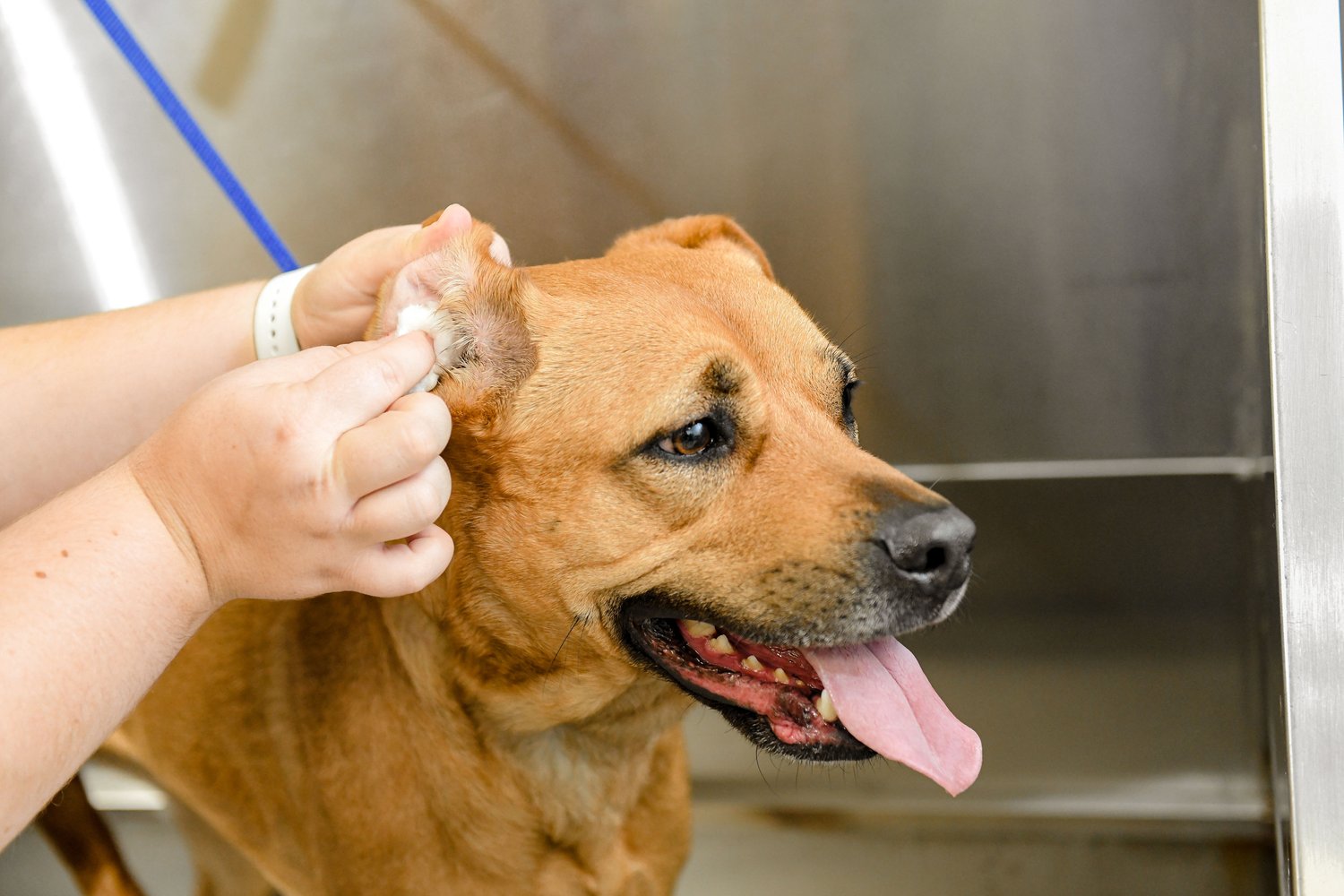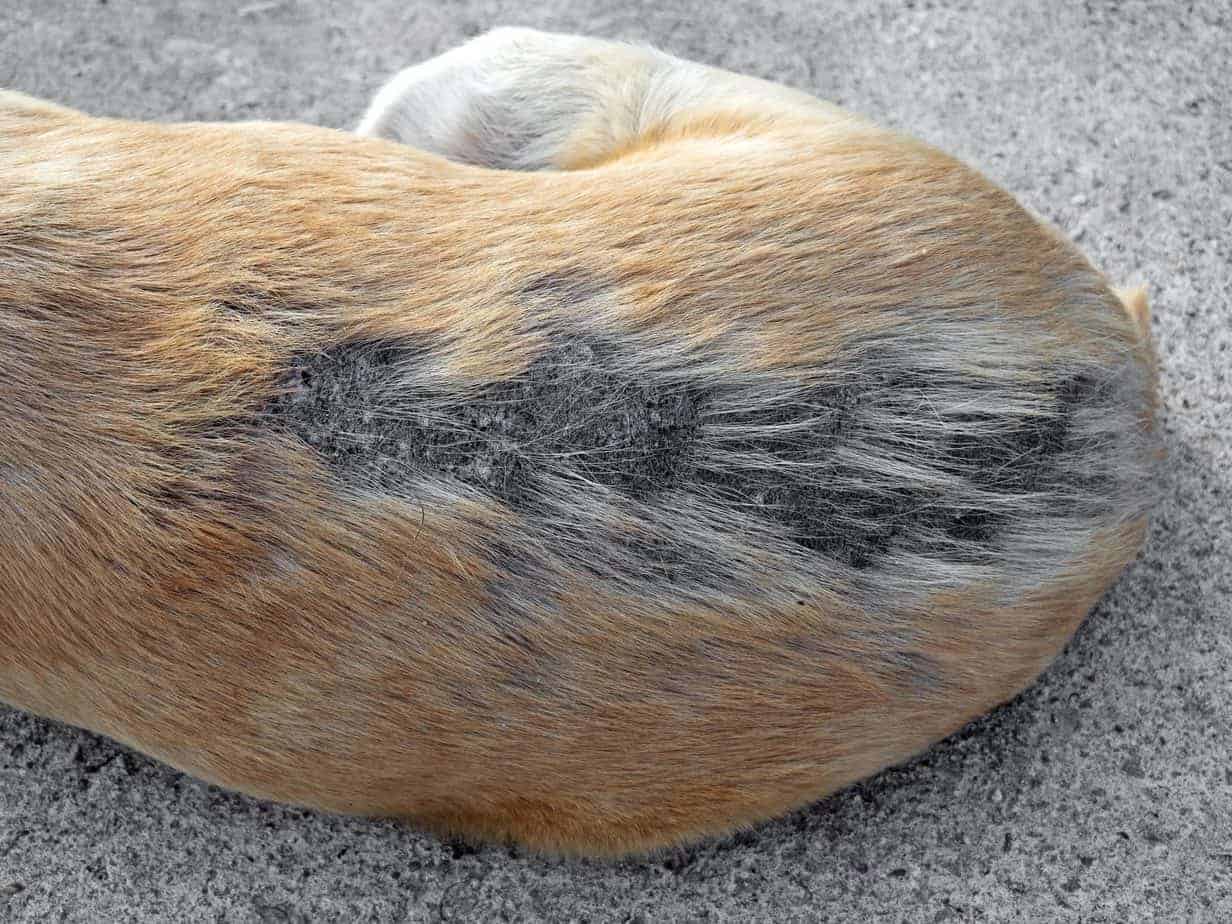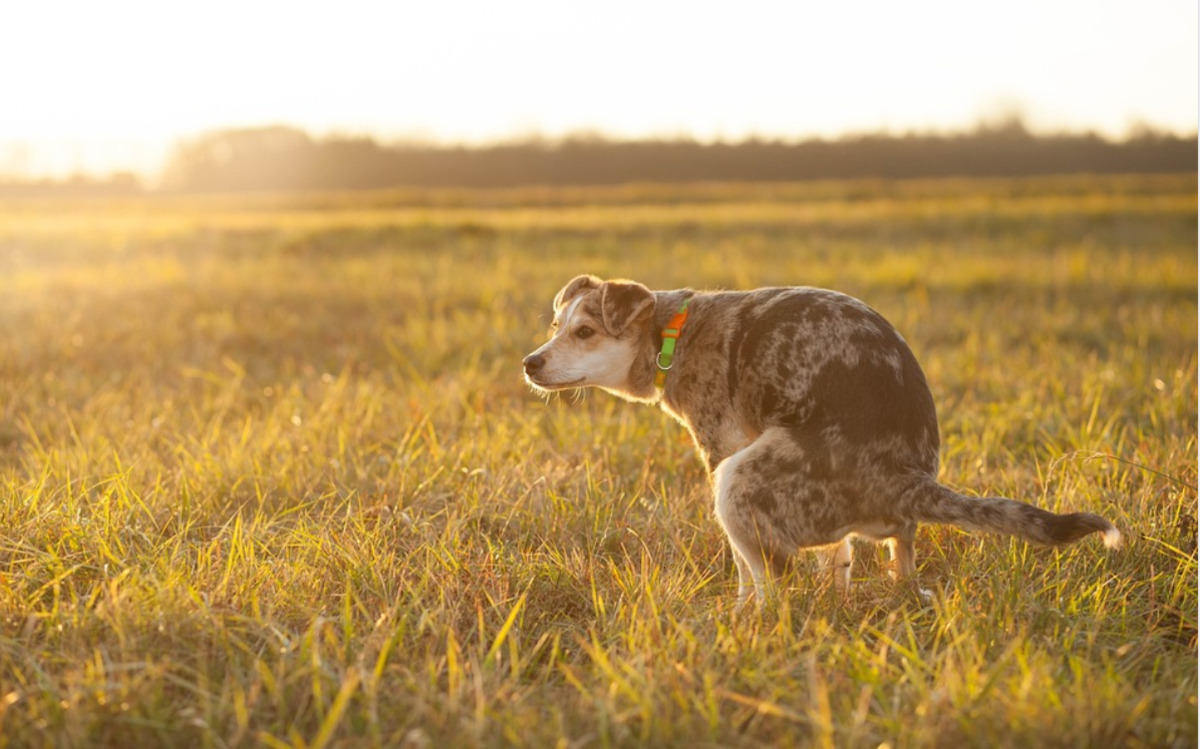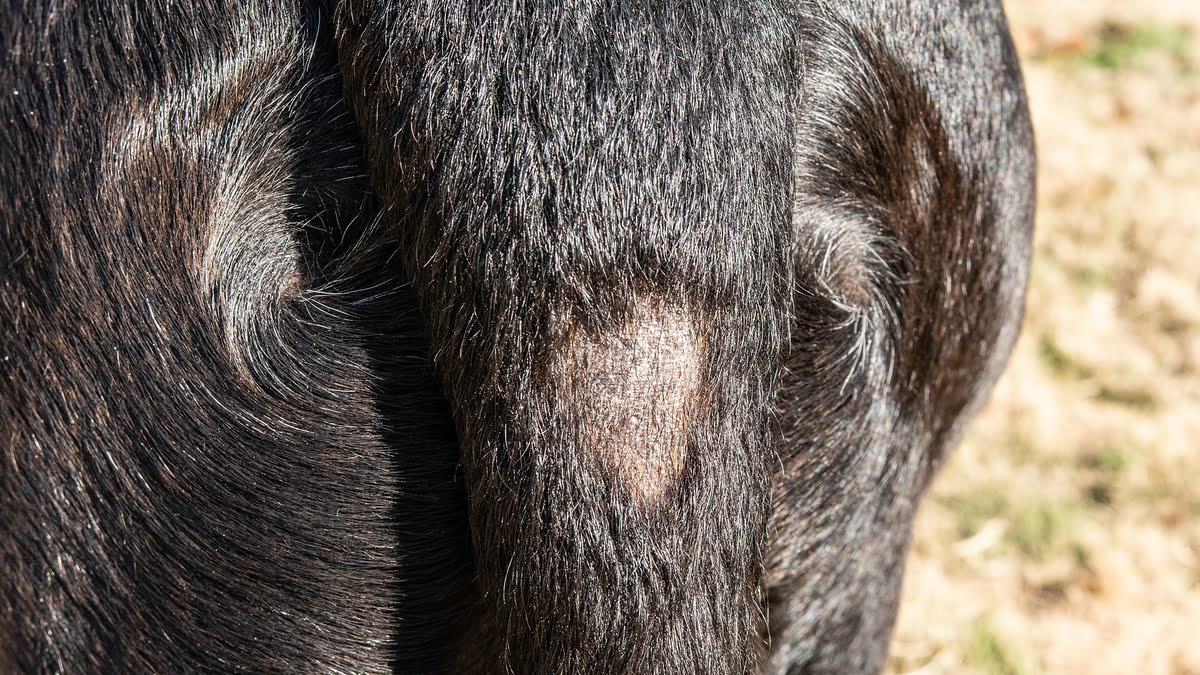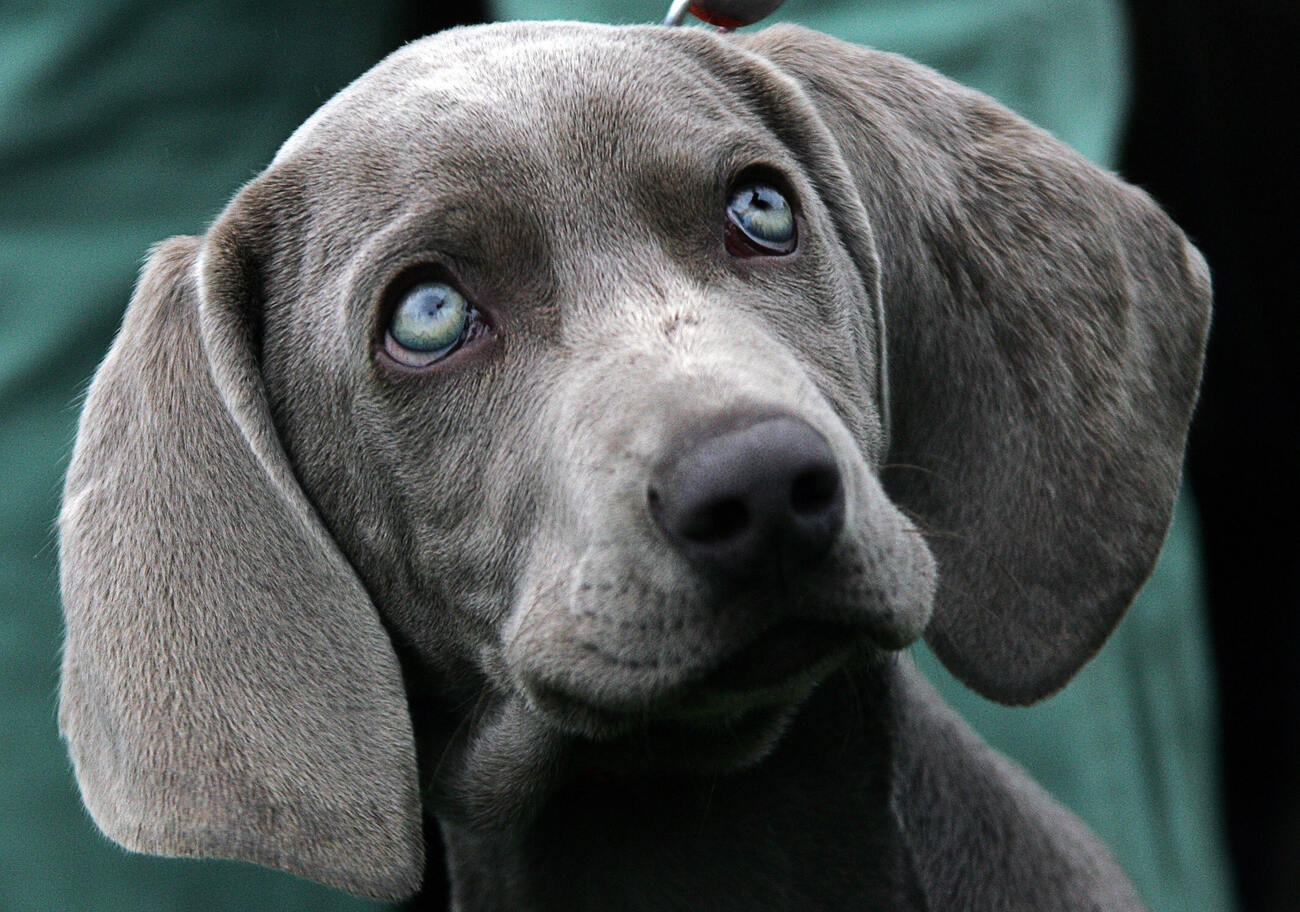Home>Health & Wellness>Common Health Issues>Eye and Ear Health>What Causes A Dog’s Eye To Bulge
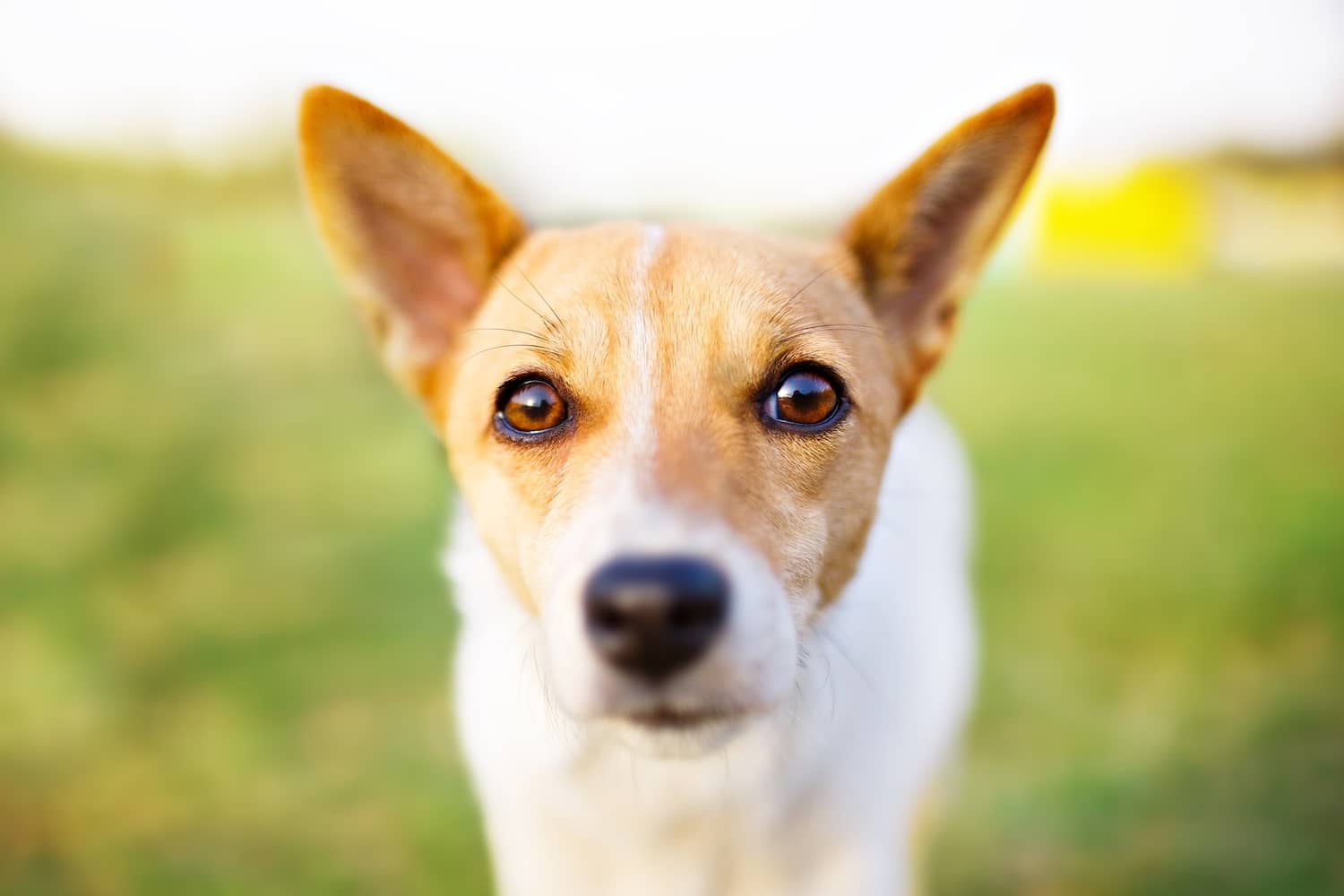

Eye and Ear Health
What Causes A Dog’s Eye To Bulge
Published: February 12, 2024
Learn about the causes of bulging eyes in dogs and how it relates to their eye and ear health. Understand the symptoms and treatment options for this condition. Keep your dog's eyes and ears healthy.
(Many of the links in this article redirect to a specific reviewed product. Your purchase of these products through affiliate links helps to generate commission for Pawsomeoldies.com, at no extra cost. Learn more)
Table of Contents
Introduction
A dog's eyes are not only windows to their soul but also vital indicators of their overall health. As a pet owner, it's crucial to be attentive to any changes in your furry friend's eyes, including the alarming condition of eye bulging. This phenomenon, known as exophthalmos in medical terms, can be a sign of various underlying health issues that require prompt attention.
Understanding the potential causes, symptoms, and treatment options for a dog's bulging eyes is essential for ensuring the well-being of your beloved canine companion. In this comprehensive guide, we will delve into the common reasons behind a dog's eye bulging, the associated symptoms, when to seek veterinary care, available treatment options, and preventive measures to safeguard your dog's ocular health.
By gaining insight into these crucial aspects, you will be better equipped to recognize the warning signs and take proactive measures to address any ocular abnormalities in your furry friend. Let's embark on this enlightening journey to unravel the mysteries of a dog's eye bulging and empower ourselves as responsible pet owners.
Read more: What Causes A Dog’s Eye To Twitch
Common Causes of a Dog's Eye Bulging
-
Injury or Trauma: One of the primary reasons for a dog's eye to bulge is trauma or injury to the eye or surrounding area. Blunt force trauma, such as being hit by a car or getting into a scuffle with another animal, can lead to exophthalmos. Additionally, foreign objects lodged in the eye can also cause bulging and should be addressed immediately.
-
Inflammation: Inflammatory conditions, such as uveitis or orbital cellulitis, can result in eye bulging in dogs. Uveitis, characterized by inflammation of the uvea, which includes the iris, ciliary body, and choroid, can lead to increased pressure within the eye, causing it to bulge. Orbital cellulitis, an infection of the tissues surrounding the eye, can also manifest as eye bulging due to the inflammatory response.
-
Infections: Various infections, including fungal, bacterial, or parasitic, can lead to eye bulging in dogs. These infections can affect the eye itself or the surrounding structures, leading to inflammation and subsequent bulging. Prompt identification and treatment of the underlying infection are crucial to prevent further complications.
-
Tumors: The presence of tumors in the eye or the surrounding tissues can cause the eye to bulge. Tumors can exert pressure on the eye, leading to protrusion. It's essential to have any unusual growths or lumps around the eye promptly evaluated by a veterinarian to rule out the presence of tumors.
-
Thyroid-Related Conditions: Hyperthyroidism or other thyroid-related conditions can contribute to eye bulging in dogs. These conditions can lead to an immune-mediated inflammatory process that affects the eye muscles and tissues, resulting in protrusion.
-
Genetic Predisposition: Certain dog breeds, such as Boston Terriers, Pugs, and Boxers, are predisposed to a condition known as brachycephalic ocular syndrome. This syndrome is characterized by a variety of ocular abnormalities, including eye bulging, and is attributed to the unique facial and skull structure of these breeds.
Understanding these common causes of a dog's eye bulging is crucial for recognizing potential underlying issues and seeking timely veterinary care. By being aware of these factors, pet owners can take proactive measures to safeguard their dog's ocular health and well-being.
Symptoms to Look Out For
Recognizing the symptoms associated with a dog's eye bulging is imperative for early detection and intervention. While the most apparent sign is the protrusion of the eye itself, several other symptoms may accompany this condition, indicating underlying health issues that require prompt attention.
-
Visible Eye Bulging: The most obvious and alarming symptom is the protrusion of one or both eyes from their sockets. This abnormal protrusion can range from subtle to severe and may be accompanied by redness or swelling around the affected eye.
-
Change in Eye Appearance: Apart from bulging, changes in the appearance of the affected eye can be observed. This may include a change in the position of the eyelids, abnormal pupil size, or a difference in the way light reflects off the eye's surface.
-
Discomfort or Pain: Dogs experiencing eye bulging may exhibit signs of discomfort or pain, such as pawing at the affected eye, rubbing their face against surfaces, or showing sensitivity to touch around the eye area.
-
Excessive Tearing or Discharge: An increase in tear production or the presence of abnormal discharge from the affected eye can indicate an underlying issue, such as infection or inflammation.
-
Changes in Behavior: Dogs with eye bulging may display changes in their behavior, such as reluctance to be touched around the head or face, increased irritability, or a decrease in appetite and activity level.
-
Vision Changes: Impaired vision or changes in the dog's ability to see clearly may accompany eye bulging. This can manifest as bumping into objects, difficulty navigating familiar spaces, or a reluctance to move around in low-light conditions.
-
Squinting or Blinking Abnormalities: Dogs may exhibit abnormal blinking patterns or squinting in an attempt to alleviate discomfort or protect the affected eye.
-
Signs of Systemic Illness: In some cases, eye bulging may be accompanied by symptoms of systemic illness, such as lethargy, fever, or changes in breathing patterns. These signs may indicate a more severe underlying condition requiring immediate veterinary attention.
By remaining vigilant for these symptoms, pet owners can promptly identify potential issues related to a dog's eye bulging and seek veterinary care to address the underlying causes. Early intervention is crucial in preventing further complications and ensuring the well-being of the canine companion.
When to Seek Veterinary Care
Recognizing the urgency of seeking veterinary care for a dog with bulging eyes is paramount in ensuring the prompt diagnosis and treatment of underlying health issues. While some instances of eye bulging may be transient or benign, certain scenarios warrant immediate veterinary attention to safeguard the dog's ocular health and overall well-being.
Immediate Veterinary Attention
-
Sudden Onset: If a dog's eye bulging occurs suddenly and is accompanied by signs of distress, such as whimpering, pawing at the affected eye, or exhibiting signs of pain, immediate veterinary care is essential. Sudden onset may indicate acute trauma, severe inflammation, or other emergent conditions that require urgent evaluation.
-
Visible Injury: In cases where the eye bulging is the result of a visible injury, such as a penetrating wound, laceration, or foreign object lodged in the eye, immediate veterinary care is imperative. Attempting to address such injuries at home can exacerbate the situation and lead to further complications.
-
Significant Discharge or Redness: If the bulging eye is accompanied by significant discharge, abnormal eye redness, or signs of infection, prompt veterinary assessment is necessary. These symptoms may indicate an underlying infection or inflammatory condition that requires targeted treatment.
Read more: What Causes Droopy Eye In Dogs
Prompt Veterinary Evaluation
-
Persistent Bulging: If a dog's eye bulging persists for more than a few hours or is progressively worsening, prompt veterinary evaluation is recommended. Persistent bulging may signify an underlying condition that necessitates thorough examination and diagnostic testing.
-
Associated Symptoms: When the eye bulging is accompanied by other concerning symptoms, such as changes in behavior, vision abnormalities, or systemic signs of illness, seeking veterinary care without delay is crucial. These additional symptoms may indicate a more complex underlying issue that requires comprehensive assessment.
-
Bilateral Eye Involvement: If both eyes are affected, whether simultaneously or sequentially, it is essential to seek veterinary care promptly. Bilateral involvement may point to systemic conditions or infectious processes that require thorough evaluation and management.
Routine Veterinary Consultation
-
Chronic or Recurrent Bulging: For dogs with a history of chronic or recurrent eye bulging, scheduling a routine veterinary consultation is advisable. This allows for ongoing monitoring, identification of potential contributing factors, and the implementation of preventive measures to mitigate the risk of complications.
-
Breed Predisposition: In breeds known to be predisposed to ocular abnormalities, such as brachycephalic breeds, routine veterinary consultations can aid in proactive management and early detection of potential issues related to eye bulging.
By being attuned to these guidelines and promptly seeking veterinary care when necessary, pet owners can play a pivotal role in safeguarding their dog's ocular health and ensuring timely intervention for any underlying conditions contributing to eye bulging. Early veterinary assessment and intervention are instrumental in preventing potential complications and promoting the well-being of canine companions.
Treatment Options for Bulging Eyes in Dogs
The treatment of bulging eyes in dogs is contingent upon the underlying cause identified through thorough veterinary evaluation and diagnostic procedures. Once the root cause is determined, targeted interventions can be employed to address the specific condition contributing to the eye bulging. The following are common treatment options utilized in managing bulging eyes in dogs:
-
Medication and Anti-Inflammatory Therapy: In cases where eye bulging is attributed to inflammatory conditions such as uveitis or orbital cellulitis, the administration of anti-inflammatory medications may be prescribed. These medications aim to alleviate the inflammation within the eye and surrounding tissues, thereby reducing the protrusion and associated discomfort.
-
Antibiotic Therapy: When eye bulging is linked to bacterial infections, targeted antibiotic therapy is essential to combat the underlying infection. The selection of appropriate antibiotics is based on the specific causative bacteria identified through diagnostic testing, ensuring effective treatment and resolution of the infection.
-
Surgical Intervention: In instances of trauma, foreign object entrapment, or certain structural abnormalities contributing to eye bulging, surgical intervention may be necessary. Surgical procedures can involve the removal of foreign bodies, repair of ocular injuries, or addressing anatomical issues that contribute to the protrusion of the eye.
-
Tumor Management: In cases where tumors are identified as the cause of eye bulging, treatment may involve surgical excision of the tumor, radiation therapy, or chemotherapy, depending on the nature and extent of the tumor. The goal is to mitigate the pressure exerted on the eye and surrounding structures, thereby alleviating the bulging.
-
Thyroid Management: For dogs with thyroid-related conditions contributing to eye bulging, targeted management of the underlying thyroid disorder is crucial. This may involve medication to regulate thyroid function and address the immune-mediated inflammatory processes affecting the eye.
-
Ocular Supportive Care: In addition to specific interventions targeting the underlying cause, supportive care for the affected eye is essential. This may include the use of lubricating eye drops to alleviate dryness and discomfort, protective measures to prevent further trauma, and environmental modifications to promote ocular healing.
-
Long-Term Monitoring and Management: Following the initiation of treatment, ongoing monitoring of the dog's ocular health is imperative. This involves regular veterinary consultations, ocular examinations, and, if applicable, the management of chronic conditions contributing to eye bulging.
By tailoring the treatment approach to address the specific underlying cause, veterinarians can effectively manage bulging eyes in dogs and mitigate potential complications. Pet owners play a vital role in adhering to the prescribed treatment regimen, facilitating a conducive environment for the dog's recovery, and collaborating closely with the veterinary team to ensure the best possible outcome for their furry companions.
Preventing Eye Bulging in Dogs
Preventing eye bulging in dogs encompasses proactive measures aimed at minimizing the risk factors associated with this ocular condition. While certain predisposing factors, such as genetic predisposition in specific breeds, may be beyond control, there are several strategies that pet owners can implement to promote their dog's ocular health and reduce the likelihood of eye bulging.
Regular Veterinary Check-ups
Scheduling routine veterinary consultations is fundamental in monitoring the overall health and ocular well-being of dogs. Through comprehensive ocular examinations, veterinarians can identify early signs of potential issues that may lead to eye bulging. Additionally, proactive management of underlying conditions, such as thyroid disorders or ocular abnormalities in predisposed breeds, can aid in preventing the onset of eye bulging.
Environmental Safety Measures
Creating a safe and hazard-free environment for dogs is essential in preventing traumatic injuries that can result in eye bulging. Pet owners should ensure that their living spaces are free from sharp objects, potential choking hazards, and other elements that pose a risk of ocular trauma. Additionally, providing adequate supervision during outdoor activities can minimize the likelihood of accidents that may lead to eye injuries.
Eye Protection During Activities
Engaging in activities that involve potential eye hazards, such as swimming, hiking, or exposure to airborne debris, necessitates the use of protective eyewear for dogs. Protective goggles designed for canine use can shield the eyes from foreign objects, waterborne irritants, and UV radiation, reducing the risk of ocular trauma and inflammation that may contribute to eye bulging.
Balanced Nutrition and Weight Management
Maintaining a balanced and nutritious diet is crucial for supporting overall canine health, including ocular function. Adequate intake of essential nutrients, such as vitamins A and E, and omega-3 fatty acids, can promote ocular health and reduce the risk of inflammatory conditions that may lead to eye bulging. Furthermore, weight management plays a pivotal role in preventing systemic conditions, such as thyroid disorders, which can contribute to ocular abnormalities.
Read more: What Causes Sarcoma Cancer In Dogs
Ocular Hygiene and Care
Implementing regular ocular hygiene practices, such as gentle cleaning of the area around the eyes and the use of veterinarian-recommended ocular lubricants, can help prevent ocular infections and inflammation. Additionally, pet owners should be mindful of any signs of ocular discomfort or abnormalities and seek prompt veterinary care to address potential issues before they escalate into eye bulging.
By integrating these preventive measures into their canine care regimen, pet owners can play a proactive role in safeguarding their dog's ocular health and reducing the risk of eye bulging. Through a combination of attentive care, environmental safety measures, and collaboration with veterinary professionals, pet owners can contribute to the long-term well-being and ocular health of their beloved canine companions.
Conclusion
In conclusion, a dog's eye bulging, medically referred to as exophthalmos, can serve as a crucial indicator of underlying health issues that necessitate prompt attention and intervention. By understanding the common causes, associated symptoms, and appropriate courses of action, pet owners can play a pivotal role in safeguarding their canine companions' ocular health.
The diverse array of factors contributing to eye bulging, including trauma, inflammation, infections, tumors, thyroid-related conditions, and genetic predispositions, underscores the multifaceted nature of this condition. Recognizing the symptoms associated with eye bulging, such as visible protrusion, changes in eye appearance, discomfort, and vision abnormalities, empowers pet owners to promptly seek veterinary care when necessary.
The urgency of seeking veterinary attention for a dog with bulging eyes cannot be overstated, particularly in cases of sudden onset, visible injury, significant discharge, persistent bulging, associated symptoms, or bilateral eye involvement. Early intervention is instrumental in preventing potential complications and promoting the well-being of canine companions.
Treatment options for bulging eyes in dogs encompass targeted interventions tailored to address the specific underlying cause, including medication, surgical procedures, tumor management, thyroid regulation, and ongoing supportive care. By collaborating closely with veterinary professionals and adhering to the prescribed treatment regimen, pet owners can facilitate a conducive environment for their dog's recovery and ensure the best possible outcome.
Preventive measures, such as regular veterinary check-ups, environmental safety measures, eye protection during activities, balanced nutrition, weight management, and ocular hygiene, serve as proactive strategies to minimize the risk factors associated with eye bulging. Through the implementation of these measures, pet owners can contribute to the long-term well-being and ocular health of their beloved canine companions.
In essence, the comprehensive understanding of a dog's eye bulging, coupled with proactive measures and timely veterinary care, empowers pet owners to fulfill their role as vigilant advocates for their furry friends' ocular health. By prioritizing ocular well-being and remaining attuned to potential warning signs, pet owners can embark on a journey of responsible pet ownership, ensuring that their canine companions enjoy a life of optimal ocular health and vitality.
